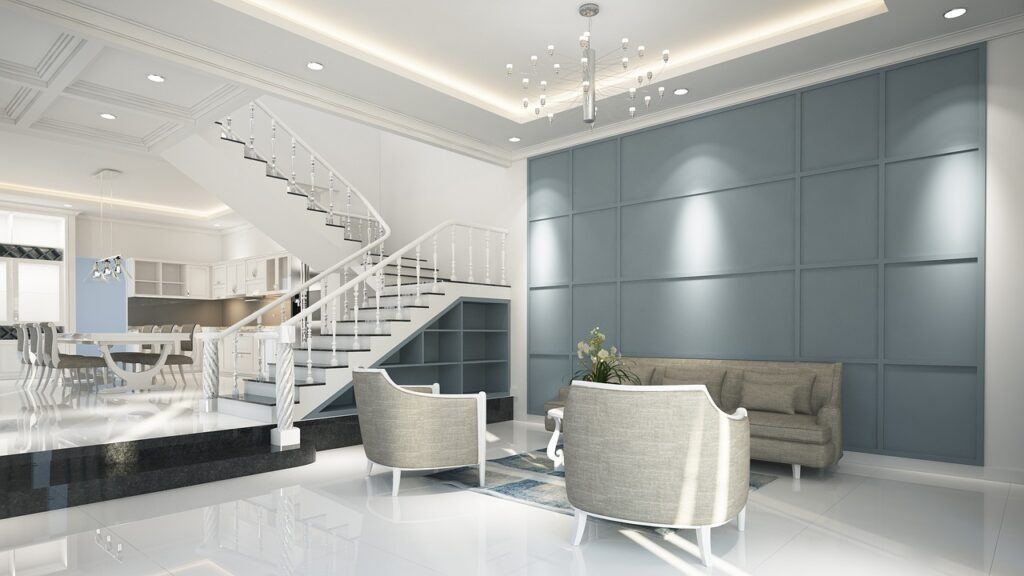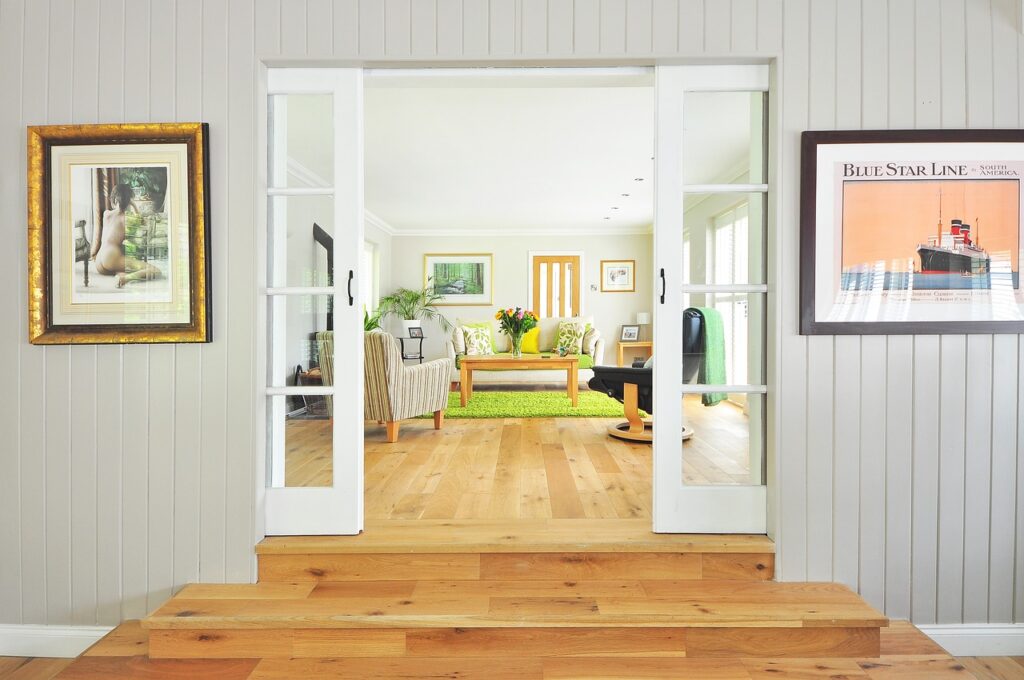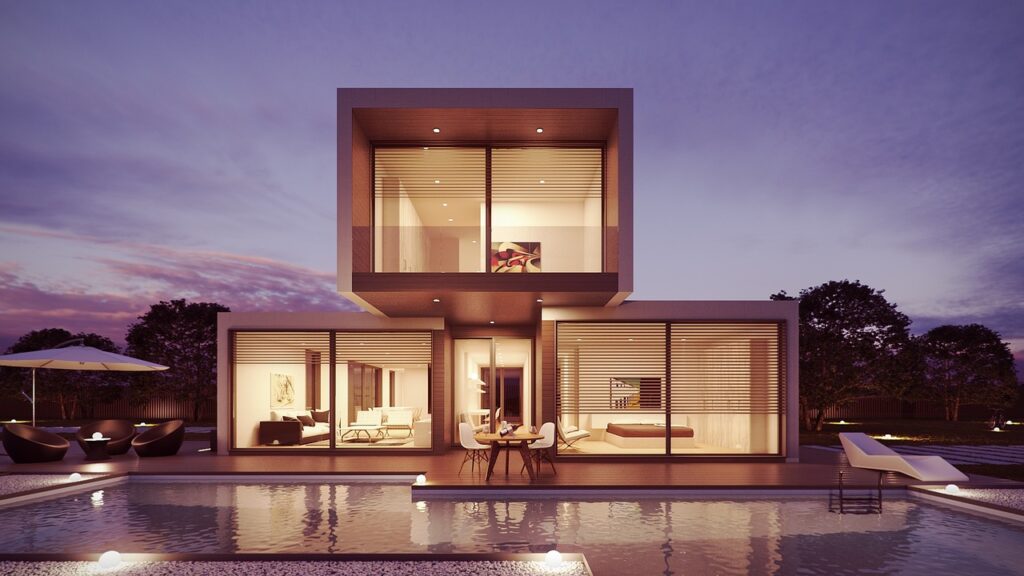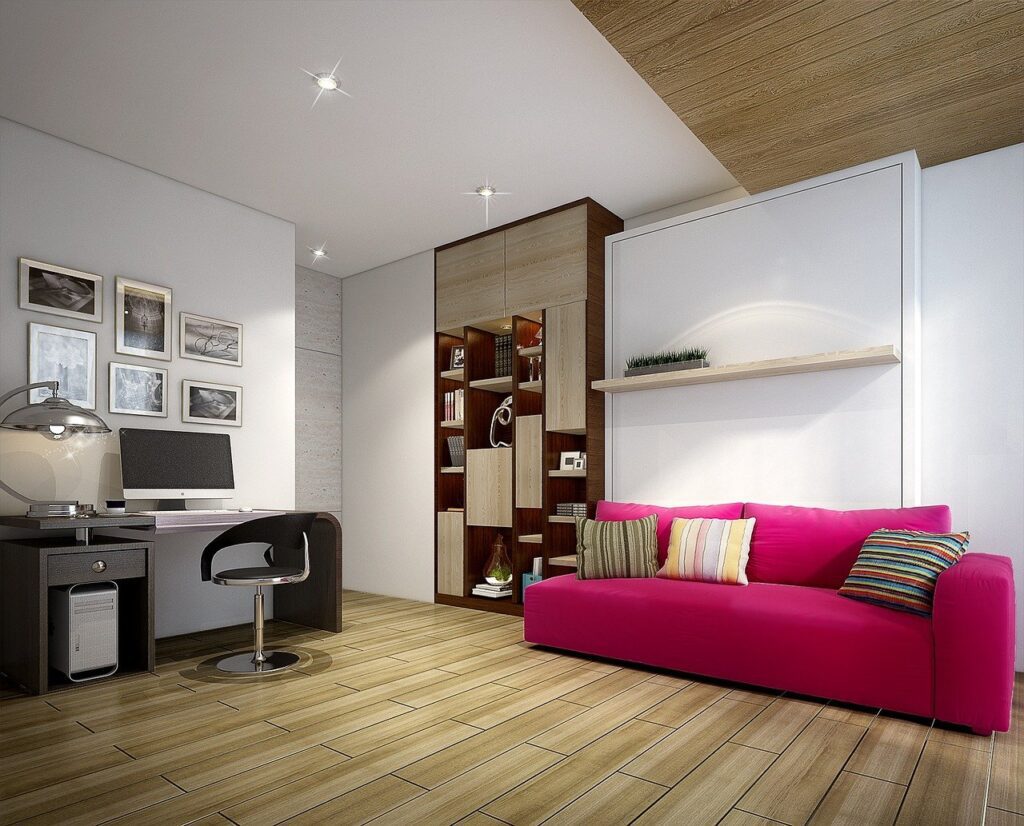In today’s fast-paced and highly competitive business environment, staying ahead of the curve is essential. One of the most effective ways to achieve this is through the integration of advanced technologies like 3D rendering and design. These cutting-edge tools have revolutionized various industries, from architecture and interior design to product manufacturing and marketing. By offering unprecedented levels of precision, efficiency, and creativity, 3D rendering and design can significantly enhance your workflow, leading to better outcomes and increased profitability.
3D rendering and design are not just about creating visually appealing images; they are powerful tools that can transform the entire process of conceptualization, collaboration, and execution. By providing detailed and realistic representations of projects, 3D rendering helps teams to better understand and communicate complex ideas. This improved clarity can drastically reduce the likelihood of costly mistakes and revisions, ensuring that projects stay on schedule and within budget. Furthermore, the ability to share and manipulate 3D models in real-time fosters a more collaborative environment, enabling teams to work together more effectively, regardless of their physical location.
The benefits of 3D rendering and design extend beyond the immediate project lifecycle. These technologies can also enhance marketing efforts by providing high-quality visuals that captivate potential clients and stakeholders. Additionally, they streamline manufacturing processes by ensuring that designs are accurately translated into production, minimizing errors and reducing waste. As businesses continue to seek innovative ways to improve efficiency and drive growth, the adoption of 3D rendering and design is proving to be a game-changer, offering a multitude of surprising benefits that enhance overall workflow and productivity.
1. Enhanced Visualization And Conceptualization
Enhanced visualization and conceptualization through 3D rendering and design fundamentally transform how ideas are developed and communicated. Traditional 2D drawings and sketches can often fall short in conveying the full scope of a project, leading to potential misunderstandings and overlooked details. In contrast, 3D renderings provide a highly detailed and realistic view of the final product, enabling stakeholders to see the project from every angle. This comprehensive visualization helps in identifying potential design flaws early in the process, allowing for timely adjustments that can save both time and resources. Additionally, 3D models can simulate real-world conditions, giving a more accurate representation of how a design will perform in its intended environment.
This enhanced conceptualization is particularly valuable during the brainstorming and planning phases of a project. Designers and architects can experiment with different materials, colors, and layouts in a virtual space, exploring various options without the need for physical prototypes. This not only accelerates the decision-making process but also fosters greater creativity and innovation. Clients and team members can provide instant feedback on 3D models, ensuring that everyone’s vision aligns and reducing the risk of costly revisions later on. By bridging the gap between imagination and reality, 3D rendering and design empower professionals to bring their ideas to life with greater clarity and confidence.
2. Improved Collaboration And Communication
Improved collaboration and communication are among the most significant benefits of incorporating 3D rendering and design into your workflow. In traditional project settings, conveying complex design ideas can be challenging, often leading to misunderstandings and misaligned expectations. 3D models mitigate these issues by providing clear, detailed, and easily interpretable visual representations that all stakeholders can understand. Whether it’s a detailed architectural structure, a product prototype, or an interior design layout, 3D renderings ensure that every team member, from designers to engineers to clients, has a precise understanding of the project’s vision. This common visual language bridges communication gaps, fosters a more cohesive team dynamic, and facilitates more effective decision-making.
Furthermore, 3D rendering and design technologies enable real-time collaboration, even when team members are dispersed across different locations. With cloud-based platforms and collaborative tools, team members can view, modify, and annotate 3D models simultaneously, ensuring that everyone remains engaged and up-to-date with the latest developments. This level of interactivity not only speeds up the feedback loop but also allows for instantaneous problem-solving and ideation. Clients can be involved throughout the process, providing immediate input and approval, which streamlines the project timeline and enhances satisfaction. By enhancing both the clarity and efficiency of communication, 3D rendering and design tools ensure that projects progress smoothly and cohesively from concept to completion.
3. Time And Cost Efficiency
Time and cost efficiency are critical advantages of utilizing 3D rendering and design in modern workflows. Traditional methods of creating physical prototypes and detailed drawings can be both time-consuming and expensive. In contrast, 3D rendering allows for the rapid creation and modification of detailed models without the need for physical materials. This ability to make quick changes in a virtual environment significantly reduces the time spent on revisions and iterations, allowing projects to move from concept to completion much faster. Additionally, 3D models can be reused and repurposed across different stages of the project, further saving time and resources.
Cost efficiency is another major benefit of 3D rendering and design. By eliminating the need for multiple physical prototypes, businesses can save on material costs and labor associated with traditional prototyping processes. Potential issues and design flaws can be identified and addressed early in the virtual model, preventing costly errors that could arise during production. Moreover, the precise and accurate nature of 3D renderings reduces the risk of misunderstandings and miscommunications that can lead to expensive rework. Overall, the use of 3D rendering and design streamlines the workflow, cutting down on unnecessary expenses and ensuring that projects are completed within budget and on time.
4. Enhanced Marketing And Presentation Materials
Enhanced marketing and presentation materials are significant benefits derived from 3D rendering and design, providing a powerful tool to captivate and persuade potential clients and stakeholders. High-quality 3D renderings create visually stunning and realistic representations of products, buildings, or interiors, far surpassing the appeal of traditional 2D drawings or photographs. These compelling visuals can be used in brochures, websites, social media, and advertising campaigns to effectively showcase the unique features and benefits of a design. By presenting a vivid and detailed preview of the final product, 3D renderings help potential clients to better understand and appreciate the value and potential of the project, significantly boosting engagement and interest.
In addition to marketing, 3D renderings enhance presentation materials, making them more interactive and informative. During client meetings, project pitches, or stakeholder briefings, 3D models can be used to provide a dynamic and immersive experience. Features such as virtual walkthroughs, 360-degree views, and real-time modifications allow presenters to demonstrate the full scope and functionality of a design. This interactive approach not only makes presentations more engaging but also facilitates clearer communication of ideas and concepts. By leveraging the power of 3D rendering and design, businesses can deliver more compelling presentations that effectively convey their vision, leading to higher approval rates and successful project outcomes.
5. Accurate Prototyping And Testing
Accurate prototyping and testing are key advantages of employing 3D rendering and design, allowing for meticulous examination and refinement of designs before they move into production. Unlike traditional prototyping methods, which can be costly and time-consuming, 3D rendering enables the creation of precise digital prototypes that can be easily modified and tested in various scenarios. Designers can conduct virtual tests to assess factors such as structural integrity, ergonomics, and aesthetics, ensuring that the final product meets all necessary specifications and quality standards. This thorough pre-production evaluation helps to identify and resolve potential issues early in the process, reducing the risk of costly errors and redesigns later on.
Moreover, 3D rendering facilitates more effective and efficient testing by simulating real-world conditions and environments. For instance, architects can use 3D models to simulate how a building will withstand weather conditions or how lighting will affect an interior space. Product designers can test the functionality and durability of their designs under different usage scenarios. These simulations provide valuable insights that are often difficult to obtain through physical prototypes alone. By leveraging 3D rendering for accurate prototyping and testing, businesses can ensure their designs are optimized for performance and reliability, ultimately leading to higher quality products and more successful project outcomes.
6. Customization And Personalization
Customization and personalization are significantly enhanced through the use of 3D rendering and design, offering unparalleled flexibility to meet the unique needs and preferences of clients. In industries such as interior design, architecture, and product manufacturing, the ability to tailor solutions to individual tastes is highly valued. 3D rendering allows designers to create multiple versions of a product or space quickly, adjusting elements such as colors, materials, and layouts in real-time. Clients can visualize these variations in detail, helping them to make informed decisions and ensuring that the final result aligns perfectly with their vision. This level of customization not only improves client satisfaction but also gives businesses a competitive edge by providing bespoke solutions.
Furthermore, 3D rendering and design facilitate personalization by enabling the creation of unique, one-of-a-kind items or spaces that reflect the personality and specific requirements of the client. For example, in product design, manufacturers can offer personalized features such as engravings, specific dimensions, or tailored functionalities that cater to individual preferences. In architecture and interior design, clients can see how different design choices will look in their actual space, allowing for a highly personalized environment that meets their lifestyle needs. This ability to offer personalized and customized solutions not only enhances the client experience but also fosters a deeper connection between the client and the designer, leading to increased loyalty and repeat business.
7. Streamlined Manufacturing Processes
Streamlined manufacturing processes are revolutionized through the integration of 3D rendering and design, leading to increased efficiency and precision in production. By using 3D models as the basis for manufacturing, companies can eliminate many of the manual steps involved in traditional manufacturing processes. These models provide detailed instructions for machining, molding, and assembly, reducing the likelihood of errors and minimizing waste. Additionally, 3D rendering allows for the creation of complex geometries and intricate designs that may be challenging or impossible to produce using conventional methods. This opens up new possibilities for innovation and product differentiation while maintaining high levels of accuracy and consistency.
Moreover, the integration of 3D rendering and design with manufacturing processes streamlines the transition from design to production, reducing lead times and increasing overall productivity. Manufacturers can directly translate digital designs into physical prototypes or finished products, bypassing the need for intermediary steps such as manual drafting or pattern making. This seamless workflow optimization not only saves time but also enables companies to respond quickly to changing market demands and customer preferences. Ultimately, by leveraging 3D rendering and design to streamline manufacturing processes, businesses can achieve higher levels of efficiency, quality, and competitiveness in today’s fast-paced global marketplace.
Final Thoughts
In conclusion, the integration of 3D rendering and design into workflows across various industries brings about a transformative shift, offering a multitude of benefits that enhance efficiency, creativity, and competitiveness. From enhanced visualization and conceptualization to improved collaboration and communication, these technologies provide powerful tools that streamline processes and drive innovation. The time and cost efficiency afforded by 3D rendering enable businesses to accelerate project timelines and reduce expenses, while accurate prototyping and testing ensure that designs meet quality standards before production begins.
Furthermore, the ability to customize and personalize solutions to meet individual client needs fosters deeper engagement and loyalty. Meanwhile, streamlined manufacturing processes driven by 3D rendering lead to increased productivity and precision, ultimately resulting in higher-quality products and greater market responsiveness. As businesses continue to embrace digital transformation, the adoption of 3D rendering and design emerges not only as a necessity but also as a strategic advantage in today’s dynamic landscape. By harnessing the power of these technologies, organizations can unlock new levels of innovation, efficiency, and success in an increasingly competitive global marketplace.

Transform Your Space With 3D Rendering And Design By Red White & Blue Construction!
Are you considering upgrading your home’s design in Lafayette, CA? Red White & Blue Construction is your premier choice for expert 3D rendering and design services! Specializing in meticulous planning and execution, we tailor our strategies to meet your specific needs and visions. Known for our expertise in 3D design, we are dedicated to transforming your space into a more stylish, functional, and modern environment. Every aspect of our work is carefully planned and executed to exceed your expectations. Our esteemed reputation throughout the Bay Area stands as a testament to our commitment to precision, quality, and the high standards we uphold in every project phase.
At Red White & Blue Construction, our goal is to do more than just update your design; we aim to enhance your entire home renovation experience. With our detailed planning, transparent pricing, and unparalleled customer service, choosing us for your 3D rendering and design needs means embarking on a smooth, efficient renovation journey. Opt for Red White & Blue Construction and take the first step towards a more stylish and functional home. Contact us today to get started!
Disclaimer
The materials available on this website are for informational and entertainment purposes only and not to provide advice. You should obtain advice concerning any particular issue or problem from a professional. You should not act or refrain from acting based on any content included in this site without seeking legal or other professional advice. The information presented on this website may reflect only some of the current building developments. No action should be taken in reliance on the information on this website. We disclaim all liability concerning actions taken or not taken based on any or all of the contents of this site to the fullest extent permitted by law.





